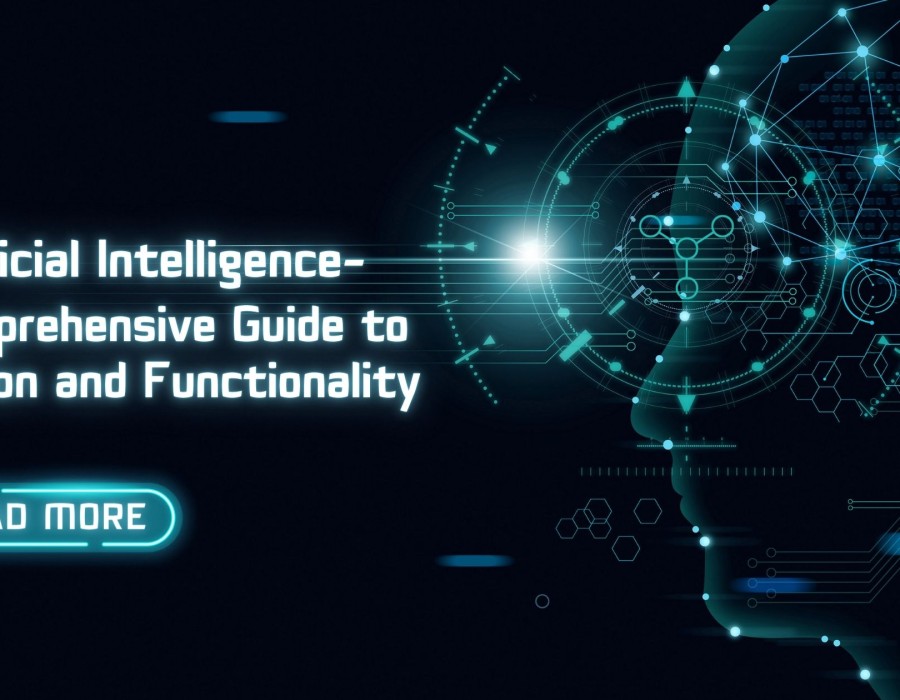Artificial intelligence (AI) has become pervasive in this era of quick technological advancement, influencing many aspects of our everyday life, including communication, entertainment, and transportation. Its origins can be found deep within the pages of history, with Greek philosophers debating the idea of extraterrestrial intelligence and the Renaissance introducing the idea of robots.
As a cornerstone of contemporary civilizations, AI is now being relentlessly developed by businesses all over the world. It can be challenging for firms to navigate this volatile environment. It might be difficult to remain at the cutting edge of innovation while knowing where to start.
Enter this thorough guide, a priceless tool designed for companies looking for direction in the rapidly increasing field of AI. We explore a wide range of subjects on these pages, providing insights into:
What is Artificial Intelligence?
John McCarthy, one of the field's earliest pioneers, gave the following initial description of AI in 1955: "The science and engineering of creating intelligent machines."
A little more up-to-date definition of AI is: a large area of computer science concerned with building tools that can learn, make choices, and carry out activities at a level that is comparable to that of a human. Modern AI devices are capable of independent learning and development. Even simple AI can accomplish complex tasks that would typically require human intervention, but it may require assistance from a programmer to learn from its errors and advance.
How Does AI Work?
At its foundation, the Artificial Intelligence Journal (AI) relies on a fundamental tenet: data absorption is followed by an iterative analysis cycle using a variety of algorithms. AI finds patterns in the data through this iterative learning and then produces targeted answers. In more complex cycles, AI examines and improves its own operational efficiency in addition to improving performance with each cycle.
The propensity model is a mechanism that makes predictions based on processed input, which in turn directs subsequent actions or reactions, and it is a crucial component of AI systems.
Different types of AI rely on different fundamental algorithms, which affects how they learn and act. Some people are skilled at simple jobs like data categorization or predictive analysis, while others are excellent at far more difficult activities like autonomous driving without human intervention.
Types of AI
AI may be categorized into four basic categories based on how much data it can retain and how it uses that data. Some are only able to respond to the stimuli that is right in front of them and cannot store any info at all. Some have a finite capacity for data storage. Some people are able to store a lot of data and use it to get better.
The final two of the four acknowledged forms of AI are purely theoretical at the moment. To get to those heights, researchers and programmers are still making progress.
The four types of AI are:
- Reactive
- Limited Memory
- Theory of Mind
- Self-Awareness
Reactive
AI at its most fundamental level uses a "reactive" mechanism to operate. These devices can only react to the data that is presented to them and are unable to keep data in their memory. These devices are unable of learning or creating any kind of memory, and they consistently respond to the same input with the same result.
Examples of reactive machines include:
- Game-playing AI machines (such as AlphaGo, or Deep Blue)
- Spam filters on email websites
- Recommendation functions on e-commerce websites
Limited Memory
A development over reactive machines, memory constraints Artificial intelligence (AI) has the capacity to short-term store data input and use that to determine its next line of action. By analyzing the input data to forecast how an outcome would be affected, the limited memory machine uses this information to decide how to respond.
This sort of AI differs from more sophisticated types in that once they have been programmed and educated to act, they will not get better on their own. Data input and memory functions are only used to choose amongst options; they do not actually aid AI development.
Examples of limited memory AI include:
- Self-driving cars take in data (such as driving conditions, traffic, and nearby pedestrians) to make decisions and avoid accidents.
- Self-working robots take in limited data on their surroundings in order to make decisions.
Theory of Mind
Currently, this degree of AI is just speculative. The idea behind the creation of these systems is that AI must be taught and programmed to comprehend that people (and animals) have emotions and thoughts that affect their state of mind and behavior.
Because they will be able to modify their responses and conclusions depending on "non-objective" facts, theory of mind AI will be more suited to interacting with people. This implies that AI will be able to communicate with people in a two-way manner and manage increasingly complicated situations.
Self-Awareness
After the theory of mind is developed, self-awareness is another potential stage of AI. This sounds exactly like what it is. The AI program learns about itself, its location in the world, the purpose it serves, and how people fit into the picture. It will be conscious on a par with humans, and it will be able to reason and choose for itself.





Comments